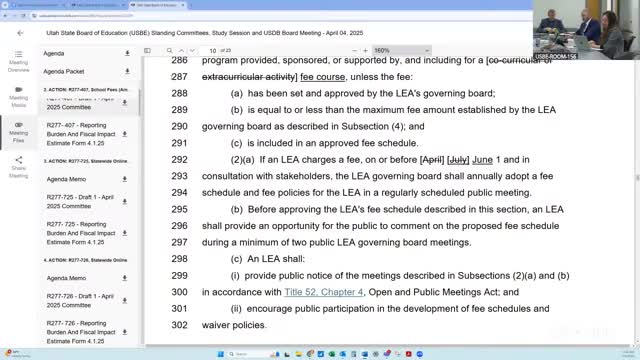New law requires schools to offer no-fee graduation options starting 2627 school year
April 04, 2025 | Financial Operations , Utah Board of Education, Offices, Departments, and Divisions, Organizations, Utah Executive Branch, Utah
Thanks to Excel Chiropractic and Scribe from Workplace AI , all articles about Utah are free for you to enjoy throughout 2025!

This article was created by AI using a video recording of the meeting. It summarizes the key points discussed, but for full details and context, please refer to the video of the full meeting. Link to Full Meeting
During the Finance Committee meeting held on April 4, 2025, officials discussed the implications of this new requirement. It was emphasized that students must be able to fulfill their graduation requirements—from ninth to twelfth grade—without incurring any costs. This includes essential subjects such as financial literacy and mathematics, which are critical for graduation.

Before you scroll further...
Get access to the words and decisions of your elected officials for free!
Subscribe for FreeCommittee members expressed concerns about how this mandate would affect smaller schools and charter institutions, particularly regarding their ability to offer the necessary courses without fees. The discussion highlighted the importance of ensuring that schools do not have to drastically alter their existing programs or introduce new, costly courses to comply with the law.
Additionally, questions arose about the clarity of the language in the legislation, particularly regarding the requirement for schools to provide options for graduation credits. Some members pointed out potential confusion, especially in elementary schools that do not award high school credits.
The committee also addressed the need for flexibility in how schools can meet these requirements, allowing for variations in course offerings while still adhering to the law. This approach aims to prevent undue burdens on schools while ensuring that all students have equitable access to the education they need to graduate.
As Utah prepares for these changes, the focus remains on creating a fair educational environment where financial barriers do not hinder student success. The committee's discussions will likely shape the implementation strategies for these new requirements in the coming years.
Converted from 20250404 Finance Committee meeting on April 04, 2025
Link to Full Meeting
Comments
View full meeting
This article is based on a recent meeting—watch the full video and explore the complete transcript for deeper insights into the discussion.
View full meeting





